Many of us are grown in the country areas not only fruit and vegetable plants, but also are engaged in breeding flowers - petunitions, daffodils, tulips, lilies, clematis. And if you have a desire to replenish your collection in any more pisching plant, we recommend you to familiarize yourself with our article about Hydrangea.
Description of Hydranges Mistelstea
Natural habitats of this hydrangea - the territory of the southern shore of Sakhalin, Japan Islands and China. There it can reach a decade meter. In our latitudes, it also grows remarkably, adapted to the heat, and frost. But her height is usually no more than two-meters. With caring care in the year, the bustice adds 25 centimeters. Even if in the harsh winter part of the shoots will suffer, this hydrangea will quickly recover. Buro-red shoots, grow straight, sometimes scattered, from the second year there is a village of stems.
It looks very picturesquely, this representative of the Hydrangea family in the period from the middle of summer and until October frosts, when in its inflorescences, whirlpool, reaching lengths up to 35 centimeters, are revealed by wonderful flowers. They can be two types:
- sterile (about three centimeters, for a long time not fall);
- ozoeple (they are in bed in size, after pollination happens, they quickly lose the petals).
The first flowers on the pitfall hydrangea appear at the age of three years.
Many varieties of hydrangea dumping during flowering occurs a change in the color of petals. First, they can be cream, then pose, and then blush or greasy. It happens that there are so many flowers that the branches are bent under their severity and even break if it is not to put back orders. The leaves of this plant are bright, large (up to 15 centimeters in length), elliptical in shape, with a sharp tip and small cloths along the edge. They have a nice velvety texture, there is a omission. Allows are very far away. All branches are abundantly covered by a friendly plates to each other. The age of these long-livers can reach up to 60 years. Hydrangea can be adapted to adverse environmental conditions, for example, if in the air is noted by increased rates of gas supply and smoke.
What kind of hydrangea to choose?
First we will give the names of hydrangea hydrangea varieties that have long been successfully grown flowerflowers:
- "Limelaight" - grows as a neat shrub, keeps his shape even without backup. Height within two meters. In the field of flowers lime tint. If this plant is constantly under the influence of sunlight, then the flowers will be white, and in the final stage they are slightly posed. In the autumn leaves of green turn into purple. The plant of this variety needs a loose soil with an acidic reaction of the medium where the lime was not introduced.
- "Kiuha" - Raskidoy, fan-shaped crown, plants height is about three meters. A pleasant fragrance comes from white-pink flowers. Reddish leaf painting leaves.
- Matilda is the height of the plants within two meters, and the width is about three. During long flowering, it is interesting to observe how the painting of fragrant flowers is changing - from cream to pink-green.
- "Grandiflora" - pleases with major pyramidal "sweatshops", but they bloom a little later than other varieties. First, their color cream, then white, later the pink shade appears, but the in the fall is a reddish-green.
- "Floribunda" - shoots up to two meters, decorated with creamy and white lush inflorescences. Flowers are large, are on long flowers.
Gradually, other varieties are distributed in gardens and parks:
- Tardiva - this three-meter bush flows from August to October. Well looks in group compositions. First, cone-shaped "sweatshirts" cream-white, by the end of flowering - pink-purple.
- Vanilla Freiz - By the beginning of the fall, white-pink inflorescences become crimson, and in October purple, the topshestka remains white. Such a wonderful grade was created by Jean Reno, a breeder from France.
- "Freiz Melba" is another unpretentious and frost-resistant "brainchild" of the Frenchman Renault. Strong shoots (up to two meters), withstanding without supports, large inflorescences, where white and raspberry colors contrast.
- "Candelaight" is a thick, abundant bush, whose height is not more than 150 centimeters. Conical inflorescences first with yellow-green flowers, which then change the color of golden-cream, and by October - on the reddish.
- "Brussels Lace" - fruitless white flowers are so gentle that the bush is compared with the beauty of the bride. Wine shoots, less than two meters.
- "Baby Lace" is a lung in cultivation, resistant to the amazing of mildew. Its height is not more than 120 centimeters. Inflorescences are small (up to 15 centimeters), originally their white painting, then turning into pink tones.
- Pink Daimond - over time, inflorescences become almost red.
- "Pinkie Winks" - the coloring of the "Metechok" first white, then pink-red, purple-pink. Stems durable. In the fall of the color of the leaves becomes purple-purple.
- "Junik" - has fragrant snow-white breaker influences, which they pose by autumn.
- "Diamond Rouge" - first the inflorescence of white, and in the fall of cherry-red.
- "Silver Dollar" - its landscape designers are placed in the parks next to other decorative plants. The inflorescences are greenish-white, by autumn transformed into silver-pink.
- "Mega Pearl" - looks good both on the lawn and combinations with other bushes.
- "Dolly" - his "height" is just over 150 centimeters, white inflorescences are banging on durable stems, it becomes pink to the autumn.
- "Santa Freiz" is translated as "strawberry ice cream" - a compact bush, whose height is not more than a meter. The inflorescence consists of sterile greenish-white flowers, then at the bottom of the inflorescence changes to strawberry color.
- "Wims Red" - on strong shoots whose height is up to 180 centimeters, large inflorescences are preserving, some of them are in length of 35 centimeters. From June to September, you will observe how first they are cream, then pink, then go to a more rich pink, on the final stage - the wine-red.
- "Bombshell" - all dwarf shrubs are covered with white flower.
- "Bobo" - does not grow more than 70 centimeters in height, at the end of June, the first flowers in dense cone-shaped inflorescences are revealed on it. First, their painting is white or with the presence of lemon shade, then pink.
- "Little Lime" - greenish flowers are revealed at one-year shoots, which are povered by autumn.
- "Phantom" - on the background of velvety dark-green foliage, large cream inflorescences are distinguished, in which most flowers are sterile. At the ends of the inflorescence, a pink "blush" is noticeable.
- The Polar Bear is a frost-resistant bush with an abundance of snow-white "sweatshirts".
A varieties that need many sunlight and moisture: "Unicken", "Levan", "Diamond Rouge", "Phantom", "Diamantino".
Sorts in need of acidic soil and recommended for sexual seats: "Dolly", "Little Lime", "Vims Red", "Madgical Munlayt".
The most suitable for the Moscow region varieties of hydrangea messengers are considered: "Bobo", "Grandiflower", "Vanilla Freiz", "Pinky Vinki", "Limelaight", "Tardiva", "Kiuha", "Polar Bear", "Mega Pearl", " Phantom "," Freiz Melba ".
It is difficult to highlight the best varieties of hydrangea of \u200b\u200bhydrangea, they are all good in their own way. We only note that the varieties are delightful - "Great Star", "Vanilla Freiz", "Earli Senseiyshen", "Magical Candle", "Daimond Rouge", "Madzhikal Fire", "Freiz Melba".
Take a boarding of hydrangea
It is very important to choose the right place for a seedling on the site. Some varieties are growing perfectly in half, others need the abundance of the sun. As for the soil, it must be clay or drigly, but necessarily fertile. Sand soils for hydrangea are not suitable. Most hydrangeas requires an acidic medium reaction, then the color of the flowers will turn out to be bright, and a lot of "swelling" is formed. For the acidification of the soil, you can take a semi-proverse needle (from ate or pine), brown peat, sawdust. Dolomitic flour, ash, lime is not made under this culture.
So that the moisture remained under the crown, the soils, for example, cocoons, stamps are located near the hydrangea.
In the open ground, the landing of the buggy hydrangea is produced at the beginning of spring or in September. It is desirable to buy a hortenzia in the spring, then she will very quickly come true and go to active growth. You can do this at flower exhibitions-fairs, in nurseries, garden shops and centers. When planting this plant, in the fall there is a risk that the rapid cooling will not give the hydrangea to be mastered and take root on the new place. Make a widespread pit (no less than 70 centimeters in diameter) and deep (about 50 centimeters). In the deepening, add a portion of fertilizers (mineral or organic) Put a hilly of fertile land, moisturize it. When water is absorbed, distribute the roots on the hilly. It should be left with the surface of the earth. Mounting the place under Hydrangea and plenty. If you have several seedlings, it is recommended to leave a distance of 150 centimeters between them (for high plants) or 70 centimeters (for compact and dwarf molds).
Recommendations for further care for the Miscellaneous Hydrangea
- Water the hydrangea regularly and abundantly. If the weather is hot, without precipitation, then at least two times a week. Do not allow the cracking of the land under hydrangea, shallowly loosen the soil after precipitation or irrigation procedure, pulling out weeds.
- Mulching a cheese or peat crumb will help you to keep moisture in the soil layer.
- Supporting preferably to spend every ten days, alternating organic with mineral complexes. Organizer is a diluted manure alive or keen. It can be in water for watering to add a little overgrown in the bucket infusion of nettle. Special fertilizers are sold in flower shops, designed specifically for hydrangea, in which all dosages are recovered. In August, all supplies stop. If the feeders are rare or not at all are conducted, then the inflorescence is formed. In order for the color to be brighter and expressive, you can use mixtures for hydrangea, created on the basis of alum.
- Pruning is also an important element of caring for hydrangea. Let's focus on this.
How to carry out a screaming of the buggy hydrangea?
The annual trimming for hydrangea is very important for hydrangea, as it contributes to the bush looks lush and bloom abundantly. In the fall, it is necessary to crop all the "sweesters", as well as weak and old shoots, branches whose growth is directed inside the crown. It is left for wintering from 10 to 12 of the strongest shoots.
Spring trimming must be done before the blooming of the kidneys occurs. For 2-3 kidneys, adult shoots usually cut off, and young stems are 3-5 kidneys. As a result, the bush will be raised forces, by August will give an abundance of inflorescences. Do not forget the in the spring to shorten the supervised shoots and those that look weak or sick. At the gardeners who do not make a screaming of the blurred hydrangea, it may not give flowers. If you have an old bush, and you want to rejuvenate it, then all shoots cut under Penosok. For two years, the restoration of cooks should occur.
Possible difficulties in the cultivation of the buggy hydrangea
It happens that the gardener diligently moisturizes his pet, and the leaves are still drooped on it, the bush looks sluggish. Probably, the soil and roots are overheated under your hydrangea, located in the top layer. Be sure to inspire the soil with peat, crushed bark or chips.
Another trouble is the yellowing of foliage on hydrangea. At the same time, the color of the resistance does not change - they are green. These are signs of chlorosis. And it occurs if the soil is alkaline. The symptoms will go when you scribble the soil, feeding the hydrangea by iron vitrios.
There are serious diseases that can disturb the hydrangeas in the shade or highly thickened:
- Gray rot - for it are characterized by fast-growing spots of brown color. In rainy, rainy weather on such stains you can see gray mushrooms, the disputes of the fungus-pathogen can quickly spread to other cultures of the garden. Therefore, immediately, as soon as the listed symptoms noticed, take measures to save the Hydrangea and prevent the dissemination of the disease to other landings.
- Puffy dew - begins with the fact that on some leaves there are gray raids. Gradually, it becomes more, he darkens. Other leaves are affected, which are then faded and leave Hydrangea. If the powdered dew falls into young shoots, they are noticeable by the crimson specks, the fusion of these parts of the plant occurs. Such shoots are unlikely to postpone the winter.
- White rot - from her the roots of hydrangea suffer from her, as a result of which it does not receive the necessary nutrition from the soil, sluggish and can perish.
- Trachemicose wilment - the defeat begins with the root system. Soon the fungus passes to the entire vascular system of this plant. Part of the shoots turns yellow, sluggish, and all this can lead to the death of the bush.
You can try to cope with listed diseases with the help of special preparations for fungicides.
What does the drying and foaming of the leaf on the bush evidence? First, pay attention to the lower side of the sheet plates. Pousinka is the correct indicator that the cute ticks settled on the hydrangea. To combat them, the Aktellik means is suitable.
Other pests are on hydrangea:
- snails feeding with leaves;
- tLL, sucking juices from leaves;
- bugs, Potnitsa, also sucking life juices;
- weevils, sheets, leaflets feed on foliage;
- nematodes, coming roots.
From these pests, you can try folk remedies or special insecticides.
How is hydrangea winter?
Now many wonderful varieties have been created that are well winter without any shelter. But young seedlings still should be covered by fir-firing "paws". If you live in those regions where the winter is harsh, it is better to progress and cover even adult buns of hydrangea by falling in autumn.
How can you reproduce this species?
There are several possible ways of reproduction of hydrangea hydrangea:
- seeds;
- champions;
- dividing the raised over the years of the bush;
- cuttings.
Immediately warned that the hydrangea has very tiny seeds, their germination is low, thoroughness may be lost. Such a seedman blooms only four years later. Usually, flower products are resorted to stalling. Slicing (or peeling) of cuttings with hydrangea hydrangea are carried out in June (from 10 to 15th) with annual shoots (ripening, at that time boutons appear on the plant). If the cuttings were sliced \u200b\u200bin spring or in the autumn months, their rooting occurs badly. There must be no less than three pairs of kidneys. From the lower kidney, you need to leave a distance of two centimeters, and then make a cut. On short shoots, the upper sections are not made. But if the shoot is long, the upper cut should be made so that there are five more centimeters over the upper kidney. The lower sheets must be removed, and on the top it is permissible to leave one or two sheets, cutting them into the middle. A few hours (one day) hold the cuttings in water with a growth stimulator (for example, "heteroacexin"). Containers Fill in a mixture consisting of peat and sand. Each cutlets into the substrate will burst into three centimeters. Cover the cuttings with transparent plastic cups. So that the rooting is successful, the substrate in the container is kept in a moistened state. Daily cups remove the opportunity to pour cuttings and spray. Signs pointing to rooting, you will notice about a month. For the winter, such containers are transferred to a cool room where they will not be frozen. Such cuttings can already be transplanted to the places allocated next year, in August. If a small bush tries at this time to give buds, then they will have to cut them, so that the plant does not spend strength on flowering, and let them prep for winter. Such seedlings are covered in the fall, the winter hardiness will come to them after flowering (four years).
We define this hydrangea to the gauges so. Next to the adult bush, make a groove with a depth of 20 centimeters. Hang there annual escape, making first small cuts in the place where, perhaps, grow roots. We must stick to the ground with a bracket. The upper part should stand vertically. Flip the groove so that the tip remains unproved. Place it periodically water. A year later, the teen young man can be cut off from an adult bush and transfer to another place.
If you have already developed a good bush, which you want to divide into two or three parts, then dig it completely in spring (you can at the very beginning of autumn), and then spend the division. At the same time, several kidneys should remain, of which will be renewed.
Landscape designers often combine Hydrangea Miscellaneous and tree, creating spectacular compositions. These plants are combined with conifers, lilac, spirits, iris, peonies, roses, astilbamas, burning, winds. In parks and seams of Hydrangea alternate with landings of Birch, Clane, Willow.
Miscellaneous hydrangea, photo

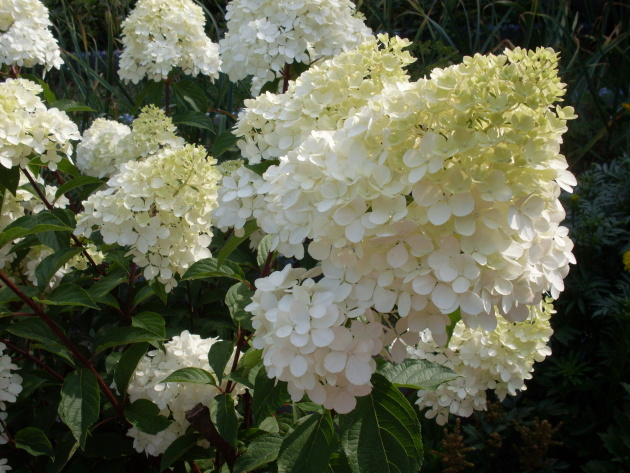
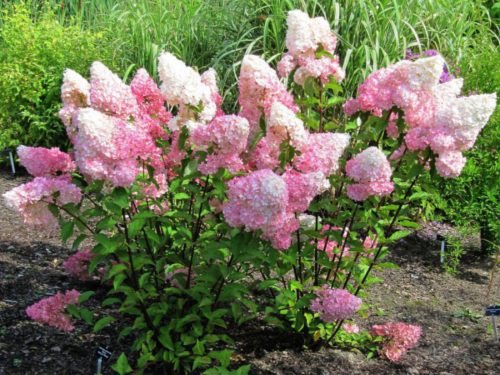
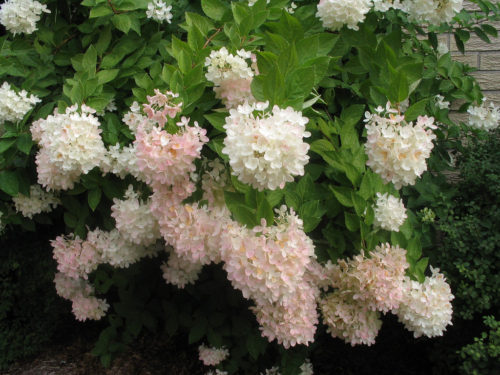
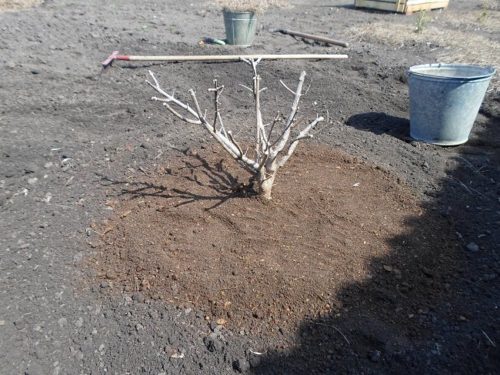
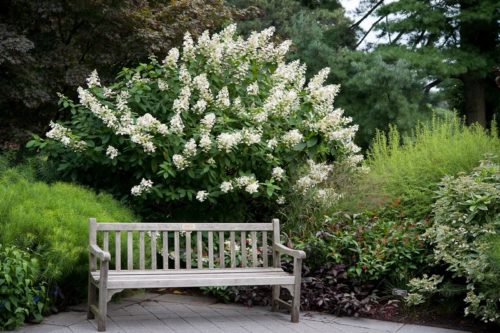
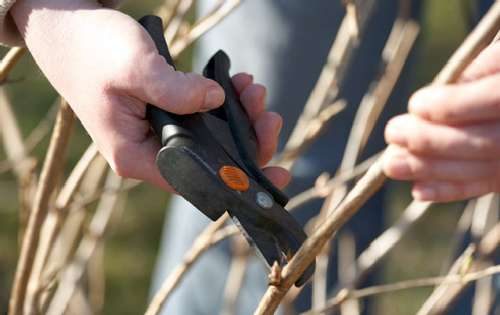
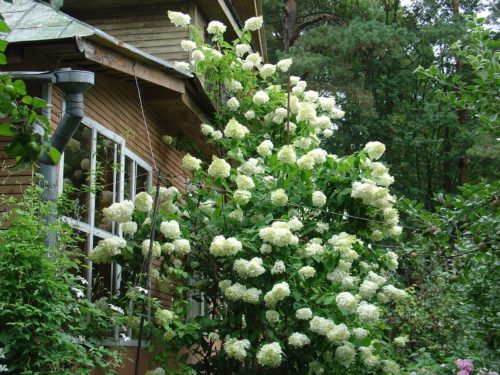
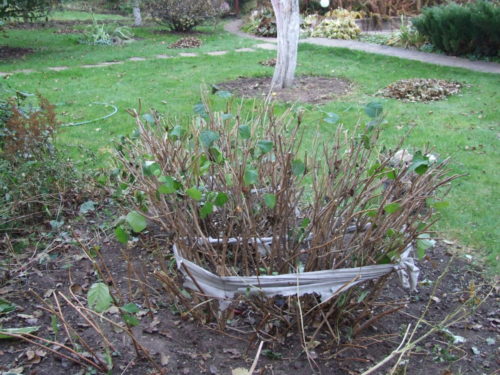

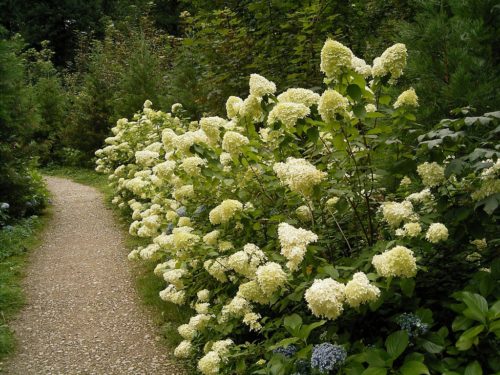
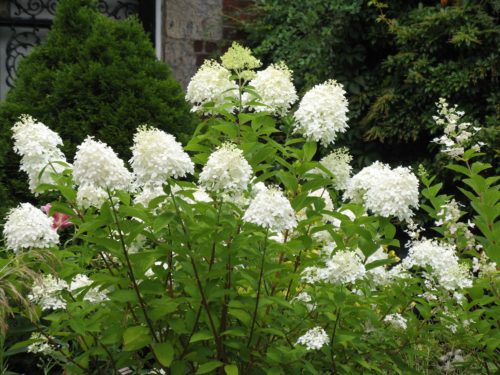
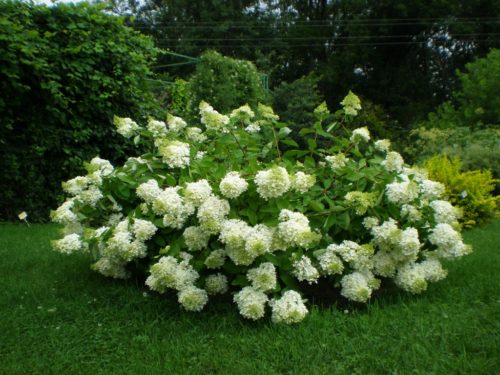
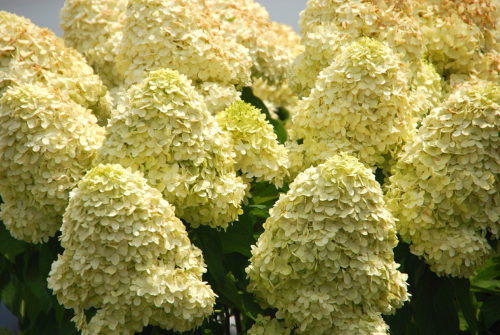

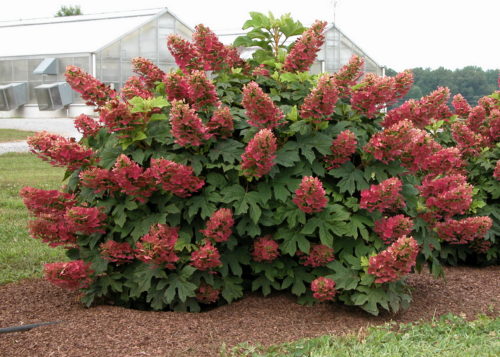
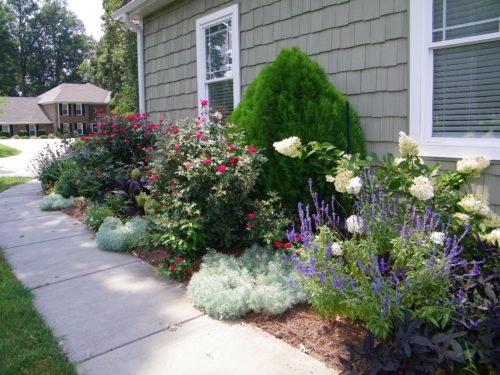












 Start a discussion ...
Start a discussion ...